#setting: unnamed sci fi thing
Explore tagged Tumblr posts
Text
Card Life Stages / Reproduction
Cards are simultaneous hermaphrodites, each individual able to act as a gestator and inseminator. Autogamy is possible, but is usually frowned upon. They are K-selected, caring for their young until maturity. They also lay eggs in clutches of 1 to 4, although 1 or 2 is more common. Cards undergo complete metamorphosis, having 4 major life stages: egg, larva, pupa, and imago. Notably, Card larvae have a more insectoid appearance. They also produce a silk-like substance which when fully matured, can form a cocoon around themselves, eventually becoming their imago form which lasts the rest of their lives.

(the line on the right is about as tall as a fully grown card on all fours.)
cultural info below
Monogamy is rare in Card society, most relationships consisting of 3 to 6 individuals. Although, sometimes, there are even more. Each Card chooses whether or not they want to have a child, and the entire household shares responsibility in raising each child. Some families make the distinction between their birth parents and care takers, while most others don’t see the point in doing so. Since each Card in a polycule can lay up to 4 eggs, their families can get quite large. This usually affects how a relationship is perceived, as higher class individuals can afford their families more easily. Some families, however, may choose only one individual to have children, limiting overpopulation which is quite prevalent in more advanced communities. Once of age, a Card is expected to go be in a relationship and move out with them. This is usually rushed, even if they are not ready for it, a common problem amongst young adults.
Being unisex, Cards don’t conceptualize sexuality or gender like humans. They do, however, have a rough equivalent to lgbtq culture, it consisting of asexual, aromantic, or monogomous individuals. People who fall into this category are usually called Ieki.
#art#my art#alien species#alien#setting: unnamed sci fi thing#bird cats#spec bio#speculative biology
7 notes
·
View notes
Note
hi! sorry if you've answered this already, i tried to search your blog and didn't find much, but we all know the tumblr search function is...uh...but i'd be deeply curious to hear your thoughts about Stephenie Meyer's "The Host," specifically re: treatment of the issue of souls' colonization and possession of other species...and obviously, since i'm asking you, an animorphs blog, this, my curiosity is definitely coming from a place of comparison to animorphs, but that doesn't have to be your focus!
from the posts tumblr's search algorithm did grant me, i gather you see it as wanda unlearning the colonizer's propaganda stance she takes at the start of the story, which i agree with!
but i guess every time i read it, i really can't help but feel...unsatisfied? with the way it actually engages with the horrors and colonization of it all?
sort of like, okay, The Host is this one very individual YA romance story in a sci-fi setting, which is obviously different from a heavily-Star-Trek-inspired middle-grade series about guerrilla warfare and is going to grapple with these issues differently...but still! i don't leave feeling satisfied with how it engages with consent of "host" bodies the souls are in, and i don't feel satisfied with how it engages with the souls' systemic behavior!!! but i can't really put my finger on why, and i just...was curious, i guess, whether this was something you had thoughts about.
(full disclosure: i'm asking you specifically because one of my HUGE points of existential dread on my first adulthood reread of The Host was how Jodi never wakes up, and her boyfriend just starts implied-dating the soul who's in her body? or how kids who are infested from birth are just...gone, and they were like "well sweet we can just put Wanda in there, this is a perfect solution!" and that I think hit me so hard in comparison with having read Eleutherophobia--which is, by the way, a masterwork of fanfiction that wrecked me, overwrote canon a little bit in my brain, and I think fundamentally changed how I see the possibilities of writing and narration, so, you know. thank you for that!)
(also like, i know there's different worldbuilding where it's implied most hosts just...go away...but do they actually? because Mel and the Seeker's host are still there, which kind of implies to me that it's more of a problem than the souls want to admit?! and even outside humans, all the memories, and compulsions toward certain behaviors are still there! what makes a person in this universe of Meyer's?! it's kind of fundamentally horrifying?!)
apologies for this extremely long ask, haha, and i hope you're doing well, love your blog, your writing, and all your thoughts!
Oh my god, ALL OF THIS. I thoroughly enjoy the first 98% of The Host. It's a romance novel about consent! Where the characters have to struggle to resolve the plot in a way that gets the permission of everyone in the love quadrangle to boink everyone else, and spends over 500 pages doing exactly that! It's anti-imperialist as fuck! It's got an amazing supporting cast, like every Stephenie Meyer novel! The imagery is unparalleled in its richness and coolness, because Stephenie Meyer! I've written fan fiction about it! I have an extremely normal relationship with Kyle O'Shea!
And then Sunny. And then Wanda's unnamed second human host.
I think that Meyer, either because of romance genre conventions or pressure from publishers, felt she had to write a happy ending. But the book does such a good job of setting up an unresolvable moral dilemma — either Wanda gets to be with Ian, or she does the right thing by giving Melanie's body back — that there is no path to a happy ending. If Ian did as Wanda asked and sent her in a jar to some other planet, romance fans would feel cheated. If Doc did as Melanie asked and let Wanda stay in her body, then the book's anticolonial message would be for nothing.
But resolving it through PARASITING A KID IN A VEGETATIVE STATE? What if Doc makes Wanda a nice robot body? What if Wanda stays in a jar, but Ian finds a way to join her in the jar? What if she and Melanie set up a time share? Uuuuuugggggghhhhh. The Host was THIS CLOSE to being the best anticolonial novel ever written, and then falls on its face inches from the finish line.
Which, aside, is the reason I don't think Animorphs would ever work with a happy ending. "Happy" for the protagonists would never be morally okay in the bigger story.
140 notes
·
View notes
Text
Book of the Week: Little Mushroom

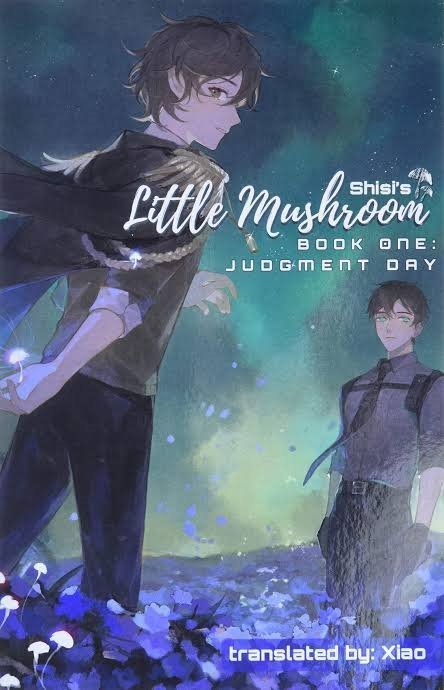

Author: Yi Shi Si Zhou (一十四洲)
Genre: post-apocalypse/apocalypse-still-happening setting, sci-fi, danmei
Rating: M
My Synopsis: A little mushroom leaves his home to find his spore and ends up becoming human along then way.
Or:

My Actual Review: Let me first confirm that this does have a happy ending. Moving on: I don’t think I’ve felt the type of hope and devastation that this book inspired in me from another piece of media in a long, long time. I can’t even make a joke about it, Lu Feng and An Zhe and so many other named and unnamed characters will really having you feeling the urgency of survival but also the pressure of extinction all at once. As you read, there’s just so much loss: loss of autonomy, loss of joy, loss of lives, loss of talent, loss of dreams, loss of morals, loss of human fucking connection, all these losses for just the faintest glimmer of a collective future. Generations of humans who gave up everything down to their very own personal survival just for the slimmest chance that a future generation will exist and exist with hope. I’m not saying if any one character’s choice of action in the face of these crushing odds was right or wrong, but through all the existentialism and personal crises the novel evoked, I feel like it’s greatest message is that at the end of the day, humans are a collection of individuals willing to sacrifice just about anything for humanity as a whole to survive—even if we may not fully be the “humans” we used to know by the end of it. And maybe this is the thing that makes us human after all.
Content warnings for: death, mass death, a brief attempted sexual assault scene at the beginning, state-sanctioned killing, and a whole lot of other things that I will just call existential crisis fodder. Basically, if a side character has a name, don’t get attached, because there's a 90% chance that was their death flag. Be very gentle with yourself while reading.
Translation: complete; it was licensed but unfortunately the publishing house shut down. The licensed version is still floating around, though, if you know where to look
#human promotes#little mushroom#i cannot stress enough: do not read this novel on a bad day#it's just too heavy if you aren't prepared#also i read the licensed version btw#idk if i will ever discuss this book in full#or how it compares to the fan translation#but that’s the peach house translation is what I’m coming from#also the fan translation art is fucking cruel in hindsight#iykyk
46 notes
·
View notes
Text
Ex Materia Reveal
Time to post about Ex Materia!
I've alluded to this game a few times here and there, but here's the pitch:
Play as debt-ridden Freelancers who pilot drone frames on extraction missions on a strange space structure.
Playbooks are semi-modular, split across your single Freelancer, and as many different frames as you can afford. Mix-and-match!
Frames are called Archons, and are going to be sci-fi funky. As a fun little preview, each Archon has what's called a Hebdomad Core, which is in-universe, the strange engine that powers them, and mechanically speaking, tied to "devil's bargains".
Missions are meant to be easy to set up and get running. They're going to be another experiment in procedural tools, and the goal is to have different "zones" be responsive to player actions.
Sponsors are who you owe your debt to, but can also provide powerful (but temporary!) augments and stratagems during missions. Will you deepen you debt to get some extra dice?
And those're the central ideas that I'm building with.
Now to talk at least a little bit what makes this game different from other Forged in the Dark games.
Archons don't have actions or attributes, they have modules.
Harm is no longer a set of boxes, it's split across two fallout clocks.
Specific downtime actions are unlockable and tied to specific locations on your (space station? space ship? haven't decided yet on that).
Freelancers don't have Stress, but they do have Bleed.
All in all, it's a lot of remixing different FitD mechanics to better suit the game goals and support a slightly different style of play.
So, specifics: Archons don't have actions or attributes, they have modules. Freelancers have actions in the expected FitD way, but Archons have a set of gear/abilities that function like actions. Each Archon has a limited memory, with modules (among other things) taking up space. Modules can be anything from "Cool Gun" to "Speed Boost" to "Cool Data Analyzer", and the rating you have in those modules gives you how many dice you roll. Want to solve a problem with your Cool Gun? If you have two points there, you get 2d6, so on and so forth. These modules also function as an Archons abilities, but in a more freeform way.
Harm is no longer a set of boxes, it's split across two fallout clocks. This is going to manifest as a simplified version of what I have cooking for Unnamed Furry Crime game, but the gist is, you have a Body+Mind clock, and a Social+Financial clock. Taking harm in any way (getting hit, spending money, burning bridges) ticks those clocks. When one fills, you get hit with a significant fallout that is going to take some time-investment to clear or fix. You can also increase the size of your clocks with advancements.
The idea is that, at least in the moment, the harm matters less than the accumulation of too much harm which then ends up breaking you. I'm also just kind of pleased with, in a game where characters are driven at least in part by debt, spending money counts as harm.
Downtime and Bleed are still cooking a bit, so I'll save those for later (plus more on the rest of the game as it develops).
The Big Goal for Ex Materia is to get a beta version released in the next several months, and then a final release later in the year. So keep an eye out for more info 👀
43 notes
·
View notes
Text
One thing I've said before is that if Lady ever got to be playable again, she should be permitted to use items like those that appeared in the classic games, instead of having a DT gauge, just to sell the fact that she is a human being keeping up with the most powerful devils in the world through guile and perseverance.
I figure these are obtained the way Nero obtains Devil Breakers. Lady has a limited inventory that she can stock with items she either finds in levels or purchases at the skill shop.
Being the stand-in for a Devil Trigger, they would be activated with the L1/LB button by default. Items would be selected with the directional pad. Some of the items would also have functions that mimic those of a standard Devil Trigger.
Here's some items I think Lady could have access to:
Vital Star: Returning from the classic games is a green star-shaped crystal, that restores some health upon consumption. If you think it's not in-character for Lady to use a Vital Star, maybe a more sci-fi-themed healing item would be more appropriate.
High-Caliber Ammo: An item that grants a unique power-up for whichever non-Kalina Ann weapon she has equipped. This replaces her charged shots from Devil May Cry 4: Special Edition, which turned her handgun bullets into incendiary or explosive shots, and her shotgun shells into piercing and shredding shots.
Grenade: Exactly what it sounds like. Throwing can be delayed like in many shooter games.
Landmine: A different kind of explosive that activates when an enemy touches it. Can be used to set up combos.
Body Armor: Equipped to grant Lady increased damage resistance, and makes her less vulnerable to flinching or being knocked down. Can only soak up so much damage before breaking.
Jetpack: Can grant Lady a traditional double jump, or an Air Raid-like state that allows her to use her ground attacks from the safety of the air, until it runs out of fuel. The image of Lady and Trish going on a flight together is very cute to me.
Tripod: Allows her to place any non-Kalina Ann weapon in the form of a turret, which will autonomously fire a set number of shots. Lady's weapon will be automatically returned to her inventory once the turret's shots are depleted, once combat ends, or once she places down another turret.
Unnamed speed-boosting drug: Primarily this would increase Lady's movement speed, melee attack speed, and melee damage for a short duration. This would be a pale purple substance that's consumed either through an inhaler or straight-up snorted as powder. This item should also alter Lady's dialogue while it's active, representing a manic and even more violent attitude. To provoke even more concern, perhaps using this item should cause Lady to take a small amount of damage. It should probably add a red tint to the screen too.
And finally, her most powerful item would be a small vehicle, which can be summoned in similar ways to Nightmare from Devil May Cry 5 (air dropped, burrowing from the ground, bursting through a wall, etc.).
I'm imagining this vehicle was made using mechanisms from a dismantled Kalina Ann II, and the original Kalina Ann can interface with it in the same way, granting access to moves like Cascade and Mega Cascade. This vehicle has a limited pool of health, and will explode when its health is depleted, after ejecting Lady.
I haven't settled on a name for the vehicle, but I'm partial to Maddona. According to the wiki, this was another name for the Virgin Mary who, along with Beatrice and St. Lucia (Trish and Lucia's namesakes), aided Dante Alighieri in his journey through hell. It's speculated that the name Madonna is what inspired Lady's chosen name.
39 notes
·
View notes
Text
CONTAINMENT BREACH AU MASTERPOST
Hello! I am Teefs, an extraterrestrial creature on the internet.
My fondness for sci-fi and things like SCP have gotten mixed up with my obsession with FNAF, specifically, FNAF SB.

Containment Breach takes place in an alternate universe based on the world designed for a comic project I'm doing over at @remnantsofmatter . There's this unnamed 'facility' that focus on researching and containing anomalies and other worldly entities.
The facility is morally corrupt only seeing these creatures as things to use to gain power to remain at the top of the food chain if there would ever be an incomprehensible danger threatening Earth.
The characters are still being thought out but this is what we have so far:
The star of the au because he is my favorite guy ever is Glamrock Freddy! in this au he is an anthro bear who recently got hired by this unnamed facility as a lead in researching anomalies and other worldly entities.
Vanessa is an emotionally distant supervisor always putting pressure on Freddy, making her a figure he often tries to avoid due to her intimidating him and stressing him out into overworking himself, but he will remain respectful and polite.
Chica is a receptionist being kept in the dark about the legitimacy of her job, she's just there to smile at government inspectors and keep them from looking further into what the facility does. Chica is Freddy's best friend from childhood.
Roxy and Monty are guards working in the facility, the frontline responders if an entity breaks out of containment.
Monty often gets into conflict with Freddy, Freddy being very protective and caring to the entities and wanting them to be treated with gentle care- which Monty knows is unrealistic because he has had to chose between a lethal shot and his life. He knows [or strongly believes] that the entities are not as "human" as the staff in the facility, his priority is keeping everyone safe no matter what thing is attempting to rip out his throat.
Bonnie in this au was designed by @himbo-in-limbo . He's a janitor at this facility that avoids death by being the silliest goober ever. Monty may try setting him up by sending him to clean the containment unit of an extremely hostile entity only for Bonnie to walk out perfectly calm without a scratch.
more characters may be added and more detailed relationship dynamics as well!
This au was created in the Rockstar Row Discord server. Which then comes the most appealing part of this au I believe, the self inserts.
I have encouraged my friends who are part of the server to design their sona's/oc's into the au!!
This post being an example by Venbetta!
Essentially I have put together a doll house to the server and am inviting my friends to make dolls so we can all play together. I'm not sure whether or not I'm comfortable with people outside the server inserting themselves into the au. Smaller projects are much more manageable than suddenly a bunch of strangers flooding in from any corner.
we're all just playing dolls and so far everyone is playing nice, we're keeping it that way.
we're also very sick in the head when it comes to Researcher!Freddy. I have been mainly kept everyhting related to the au in the discord server but I guess I'll attempt to post about it.
60 notes
·
View notes
Text
Ok. MY f/f fantasy / sci-fi recs so far:
Fantasy
To Shape a Dragon’s Breath (Moniquill Blackgoose)
FRESH. Delightful take on dragons and their magic. Fresh American (and global) alternate history, tilting the world just so on its axis, a blazingly clear look at colonialism via the eyes of a Native American. The protagonist is wonderful. The romances are surprisingly wonderful. It's fantasy, and it's speculative fiction.
Spear (Nicola Griffith)
Retelling of the story of Arthurian Percival (a woman!), incorporating Welsh and Irish mythologies. Lovely material and vivid imagining of the times. It's a pleasure to read about such a powerful protagonist. The prose reminds me that that level of writing is possible.
The Warrior's Path (Catherine M Wilson)
Classic, foundational. Bronze age coming of age story of a warrior and leader. Lovingly detailed depiction of prehistoric society. Interesting thoughts on war and peace and even magic. It's hard to describe. A classic.
Daughter of Mystery (Heather Rose Jones)
Gentry-typical early modern world. Story set in a fictional European country which makes for some really interesting linguistic choices. Really romantic bodyguard / sudden heir setup. Christianity as a magic system!!
Spring Flowering (Farah Mendlesohn)
Very sweet, Jane Austen type historical fiction. Not quite fantasy but I'm including it.
Iron & Velvet (Alexis Hall)
The reckless and hilarious urban fantasy protagonist called in to investigate high stakes conflicts but f/f. Parodies a lot and effectively. The protag calls werewolves woofs. Has chemistry with every powerful female faction-leader in the city.
The Cage (A.M. Dellamonica)
Short story. One of the most touching things I've read.
Fledgling (Octavia E. Butler)
Classic. Awesome vampires. There's some f/f in there. You have to get over the protagonist looking like a kid. Seriously. It's Butler, thus just a bit dubcon.
Sci-fi
Gideon the Ninth (Tamsyn Muir)
Obvious. Worldbuilding and prose both delightful and intriguing.
The Scorpion Rules (Erin Bow)
Unsettling, awful, fascinating proposal of a future with an antagonist-god I deeply hated. Great twist on Young Adult fiction that made me crow with satisfaction. Still think about this one regularly.
The Unnamed Midwife (Meg Elison)
Apocalypse, virus, sexual violence. And YET. It's neither truly icky nor completely beyond imagining.
Some Desperate Glory (Emily Tesh)
It's ok. It has interesting ideas, especially at the start. Have to emphasise: it starts out amazing. Great look at sexism and homophobia. The protagonist goes through one of the most elaborate and well-paced character developments I've probably ever read. Eventual plot/ending so-so.
The Stars are Legion (Kameron Hurley, derogatory mention)
It makes no damn sense. Compels me though...
21 notes
·
View notes
Text
An Introduction to the False Peace
It has been fifty years since the Final Armistice was signed, ending the Long War that consumed the world for three centuries, plunging mankind from its very height into a new dark age.
In its aftermath, the nations of old are gone, replaced with vast swathes of desolate and inhospitable nothing punctuated only by ancient installations and the gleaming spires of the City-States.
Sanctuary and Citadel in one, the City-States are massive, heavily protected fortresses each enclosing thousands of square miles, housing a population of millions, as well as the industry required to sustain them. They are everything to those who live within: Safety from roving bandits and scavengers, Shelter from the fearsome and enigmatic storms that kill and mutate with fell energies, and a chance to Survive, in the last remaining bastions of civilization in a ruined world.
However, humanity is not content within these confines. Even as the dust settles, and storms of esoteric energy ravage the world, corporations and City-States are growing bolder and bolder in seeking conflict, driven by greed, ambition, and a lust for conquest. Despite the best efforts of the valiant Knights of Svalbard, equipped with unimaginably powerful technology from the World that Was and charged with the task of safeguarding human life, total war seems an inevitability.
In this time of False Peace, everyone has a hidden agenda, and those with power are always on the lookout for the piece of Old World Tech that will allow them to finally destroy their enemies, and in that desire, opportunity lurks…
You are a Tinman, one of many mercenaries piloting the war machines known as "Frames", contracted by the various corporate powers and City-State security forces of the world to fight their proxy wars and delve into the ancient ruins of once-mighty nations, to plumb their depths for the technological wonders that lie within. However, this task is not without danger, for these ruins are not so abandoned as they might appear. Within squalid bunkers and empty garrisons, ancient and mindless constructs awake, artificial minds bound to the will of masters centuries dead, and determined to safeguard their secrets to the bitter end…
Hey, everybody! So, this is the introduction/Primer to my as-yet-unnamed, semi-original Sci-Fi setting, taking heavy inspiration from the Armored Core games, the Battletech universe, and the Cyberpunk setting. From now on, I'll be posting various informative things about the universe, from faction overviews, exposition about worldbuilding elements, and progress as the eventual TTRPG takes shape!
29 notes
·
View notes
Text




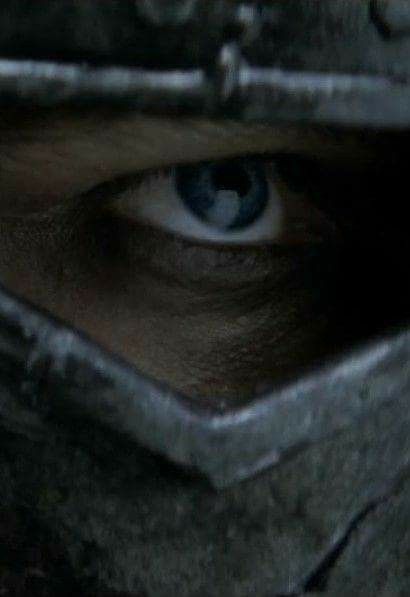

I Who Have Never Known Men

Infinite stars out of 5. I Who Have Never Known Men by Jacqueline Harpman is an amazing piece of speculative fiction that weaves sci-fi and horror elements into a novella with more emotional weight than any other novel I've read so far this year.
Following an unnamed narrator recounting her bleak existence and struggles, Harpman sets the stage for confusion and intrigue. I often couldn't put the book down, desperate to reach the next moment when more answers might be revealed.
Things I found most interesting:
The Alarm / The Vanishing: All guards from all bunkers, to the best of the reader's understanding, managed to escape and vanish from the wasteland within minutes. Where did they go? Did they return to Earth? Did all the guards truly make it out?
"Their Luck": Knowing that all other bunkers failed to survive because they didn’t obtain the keys—and that even though these women escaped that particular death, they remained trapped in another way—was chilling.
The Bus: Our main character finds a group of guards on a bus, seemingly new recruits. Yet their belongings were strange. Why would a gun, alcohol, and a book on gardening tips be considered essential supplies? Why didn’t these guards vanish like the others?
The Luxe Bunker: In the end, the protagonist finds all the instruments and literature belonging to their captors perfectly preserved. But having grown up in isolation, removed from all human society, she cannot understand or explain to the reader why any of it happened.
My best guess is that some space program captured people from marginalized communities and brought them to a new planet. Here, they were stripped of life’s comforts in a twisted effort to prepare them for terraforming the planet. The flaw in the plan, however, was that surface radiation levels remained dangerously high—perhaps explaining the prevalence of cancer among the women. Eventually, the guards may have been pulled due to a larger catastrophe, and the project abandoned the bunkers' inhabitants, deeming them unworthy of further investment. I also suspect some sort of Fallout-style experimentation was taking place.
In conclusion, I Who Have Never Known Men is a haunting, beautifully written exploration of isolation, survival, and the failure of systems meant to control and contain. Its unanswered questions and eerie silences are exactly what make it unforgettable. Harpman doesn’t offer comfort—only reflection—and the emotional impact lingers long after the final page. This novel isn’t just read; it’s experienced.
#art#life#books and reading#bookblr#i who have never known men#girl blogger#girlblogging#hell is a teenage girl#girlhood#woman#booklr#book aesthetic#book blog#book review#bookish#books#books & libraries#bookworm#reading#currently reading#books and literature
8 notes
·
View notes
Text
RAVENS OC MASTERLIST ;
list of all my active ocs [ ie i have brainrot/plans for them ]
ocs in blue are active ; pink is relevant but not as active or side character, purple is basically irrelevant
i have many older ones who i am not focused on anymore.
World 1, World 2, World 3, World 4
^ links to images / chara descriptions ^
links not complete.

W1 : Contemp. Not specifically set in a real place, but inspired by my experiences and my ideations of the world. Basically excuse for domestic and high school fluff.
Ocs present ; Leticia, Deniz, (UNNAMED), Lawrence, Florita, Izzy, Xuxa, Alex, Feuille*
[ anymore are family members ]
*yes his name is leaf in french i dont wanna talk about it i was 13.

W2 : Fantasy. Mixture between classic fantasy and the sci-fi alien sort of thing. It has lots of loose worldbuilding and a variety of stupid lore ive built from when i was 13.
Ocs present ; Liorah, Bug, Star, Pitch, Phuse, UNNAMED #2

W3 : Folklore based fantasy world, basis for my doomed yuri ocs and possibly some ocs im making with my friend @/shavroliriska
Ocs present ; Vampire, Fae , Familiar *
*they are all currently unnamed, so im referring to their fantasy species

W4 : Non specific. I.e, self inserts/sonas and the like.
Ocs present ; raven [ sona ], raven [ pmmm self insert ] , sorrel [ pjsk self insert ]

updated on ; 17.02.25 // dd/mm/yy
9 notes
·
View notes
Text
Card Ethnicities

from left to right:
Weiei - Nngzuuw - N'tuu - Korii'te - Tawtawee
random info about their cultures n stuff below
Cards are very social, with a strong sense of companionship. They often live in dense, yet isolated communities. Due to the separation between communities, Cards dont really have map borders the same way that humans do. Usually, if needed, more land is gathered by a challenge with another community, the extend of such depending on their different cultures. It isn’t rare for communities to merge together, as well. In fact, one of the largest communities is an alliance of 12. The needs of other communities within the alliance usually comes second, though. Although trade is common, separation between communities tends to slow the progress of Card civilization overall, there being vast differences in technology between differing communities. Usually, communities only keep track of others in their local vicinity.
Certain communities are often categorized together. These groups are based upon the culture, clothing, customs, and languages of each community within them. There are 15 major groups, each containing dozens if not hundreds of communities.
With their fast learning, Cards are one of the more advanced sophonts technologically. Some of the more advanced communities have access to space travel, there being colonies of Card civilizations spread throughout their planetary system. Additionally, they were the first sophont to develop faster than light travel. Despite this, however, they rarely create colonies beyond their home system, most not seeing the cost in resources worth it.
Card communities tend to greatly expand horizontally. In this, territorial disputes often arise. To avoid this, more technologically advanced communities go down instead, creating vast interconnected underground cities. Although, this is uncommon due to the risks associated with excavating below populated cities.
Since Cards originate from a supercontinent, most communities never developed boats. Moreover, transportation between communities is near nonexistent. To build things like railroads, an agreement between multiple communities is required. Projects like these usually resulted in conflict, railroads possibly intruding into a communities territory. The only viable way of transportation is by air. More advanced communities use AIs for construction or calculations, something that even further widened the gap between communities. Overall, Cards are technologically very “inconsistent”.
#art#my art#alien species#alien#setting: unnamed sci fi thing#speculative biology#spec bio#bird cats
5 notes
·
View notes
Text

HEY! Writeblr Intro!!!
Hi, my name is Caitlin, and I’m a third year Creative Writing student in rainy England. I’ve got a couple WIPs but none are set in stone so you’ll have to bear with me for a while haha.
- I’m here for a good time so my writing is solely based on my mood and vibe at the time, please do not expect consistency.
- I write short stories mainly but am trying to branch out into novels so you’ll hopefully be seeing a bit more of that in the future.
- I am a university student with anxiety and decision fatigue so things change drastically around here every so often but I promise if I go quiet I will come back.
Let’s get into the WIPs (these will be constantly edited and changing) and feel free to ask me any questions about any of them, even ones that might have been removed from this list if you’re interested.

IF I GIVE UP, SO MUST YOU - a Wild West literary fiction novel
STATUS: currently drafting (on hiatus)
GENRE: literary fiction, sapphic romance(?)
CURRENT WORD COUNT: 3,995
Okay, so a bit of info about this project. I started writing it a bit ago purely because I wanted to write a Wild West novel and then it turned sapphic and then it became literary. It follows an unnamed narrator as she navigates life outside of her small town after she is targeted by bandits in a raid. A coming of age novel that explores what it means to figure things out for yourself whilst battling with false truths engrained into your from a young age.

NIGHT SWIMMING (working title) - a short story collection
STATUS: literally haven’t even started :/
GENRE: literary, horror, surrealist
This collection is my version of NaNoWriMo this year because there is no way I can feasibly write a novel in a month where I also have to write my dissertation first draft and three other short stories like no. I’m hoping to do an update on my page whenever a story is complete, so I will also update this section to include the names of all the stories going in. Stay posted is all I’m saying ;). All I know is I want it to explore the everyday in a surrealist way (as most of my stories do).

DAMAGED GOODS - a dystopian sci-fi novel
STATUS: currently drafting (on hiatus)
GENRE: dystopian, sci-if, speculative
CURRENT WORD COUNT: 2,323
So, I haven’t done an intro post to this yet simply because I had to put it to one side once university started again. A brief summary is this: Auden, an average guy, husband, and father, has gotten into a dreadful car accident. In this society, however, surgery is replaced with metal transplantation. Due to Auden’s extensive injuries, he now must live in suburbia with a completely metal head, arm, and leg.
I’m super happy with this concept and the initial 2,000 words I’ve got I’m pretty okay with. The main issue is where to take it and if it will be a full novel or more of a novella.

EAT YOUR YOUNG - a gothic horror novella
STATUS: currently drafting
GENRE: gothic horror
CURRENT WORD COUNT: 4,950
I haven’t done an intro for this project because I honestly wasn’t sure I’d return to it but the spooky season is upon us and I really want to get back into writing this. Brief Summary: Mr Gerard is an accountant hired by the Heron Manor estate to deal with the affairs of the three sisters residing there after a mysterious death of the man of the house.
This is going to me my main personal priority other than my short stories for now and I’ll try to get an intro out soon.
Okay, so that’s all for me folks. Like I said, any questions please feel free to send me an ask or a message, don’t be a stranger. As a writer I always wanna talk about my projects, OCs, and anything else writing craft related!
I’m tagging some mutuals, if you wish to be tagged or removed :( - let me know x
@annlillyjose @dallonwrites @aesa @winterandwords @iannicellis @isherwoodj
80 notes
·
View notes
Text
The last time I read an EDA, in 2024, I was on my flight to visit my girlfriend. This year I did the same thing. Which shows just how slowly I'm getting through this series. But hey, at least on this trip I read two of them! I'm forever optimistic that I'll pick up the pace eventually.
First things first, I'll talk about Anachrophobia. I'll make a second post about Trading Futures soon.

Anachrophobia is definitely one of the books that had been hyped up to me the most by EDA fans - and now that I've read it, I understand why! While I wouldn't personally rank it as one of my absolute favourites like some people would, it's an extremely atmospheric little sci-fi horror and it had me hooked. I'll start with what I liked, which is most of the book... and then move on to how the book ended. (So there'll be gradually heavier spoilers as this post goes on.)
Probably the best aspect of this book is how strong its aesthetics are. Consider the setting: A seemingly endless forest of dead trees that's forever a pitch black midnight and forever a bone-chilling snowy winter. An uninviting, utilitarian bunker with stark concrete walls that burrows several floors underground without much hope of protecting its occupants. Chunky computers and analogue clocks. Men in business suits and bowler hats. Soldiers and scientists being ground up by their capitalist system, who try not to give into despair while waiting for their next orders to help the war effort. Anachrophobia is bleak and brutalist, and, credit to Jonathan Morris, frankly a delight to read.
Add time-travel-related eldritch horror to this setting, and most of the book is a tense little base under siege story. I was almost surprised by how quickly things were moving when the majority of the supporting cast were dead (or undead) by the halfway point, but the remaining characters being forced to wait in a locked room while their enemy prowl the corridors outside just added to the claustrophobia. The book is well paced, and I'd say it definitely earns the eleventh hour setting change that it subtly builds up to.
It certainly doesn't earn every twist in its last act though. The book hopes that you overlook that one character vanishes for over fifty pages (which I didn't, as I was trying to keep track of where everyone was during the action), and then suddenly reveals that he's a robot. Which felt a little strange since I don't think it was hinted at before then. It makes for a good visual, at least.
The way that the Doctor defeats the unnamed antagonist is another thing that I'm not really sure if I liked or not. It played with the rules of the sci-fi elements in ways that hadn't been set up, and felt a little too much like making things up as it went for me. Which is a shame because it did have the makings of a great timey-wimey satisfying conclusion.
And another thing about the primary villain of the story (although not something that impacted my enjoyment of the book while reading it)... apparently they were intended by the author to be Faction Paradox, which is strange to me. That gels with their habit of forcing people to unwrite their own history, but in all other ways I really didn't get the Faction vibe. To me the villain felt far more like an eldritch and unknowable creature from outside spacetime than a society of refugees from another timeline.
Those are all minor nitpicks though. Now to talk about the other villain of the book, and the very ending. I might ramble a bit here. Halfway through the novel, it's heavily hinted that one of the characters, named Mr Mistletoe, is actually Sabbath. It's revealed that he has two hearts, and implies that one of them is the Doctor's. Now, I was a bit confused by that, because Mistletoe didn't act anything like Sabbath. And I was also excited by that, because ever since Henrietta Street I'd really been looking forward to Sabbath's proper second appearance. But that plot went nowhere for so long that I was starting to wonder if it was just trying to bait me into thinking Sabbath would be in this book. But then, literally two and a half pages before the end, Mistletoe reveals himself to be Sabbath. He tells team TARDIS that he brought them here, he "moulded your perceptions" of some of the adventure (with no explanation of how, why, when he did that, or what that means), tells them he's working with Evil Allies, then leaves as the book ends.
This all left me very disappointed. Not only did Sabbath only pop up at the very very end, but it felt like he was trying to take credit for everything while having seemingly no impact on the plot. I assume the "perceptions" he was moulding included Mistletoe's whole personality, but even so it felt more like something the Master would do than Sabbath, and one thing I really didn't want from Sabbath was to be a knock-off Master. The whole scene gave the impression that Sabbath was squeezed into the book at the list minute. And the fact that they didn't use his name during that scene also gave the strange impression that they were trying to avoid copyrite on him, which I have to assume wasn't the case(?) The arc elements that he hinted at didn't sound very interesting for the character either. Overall, the book raised my hopes for Sabbath's return, then made me wait over one hundred pages to disappoint me with a half-baked conversation at the end.
So yeah, it definitely felt like the book tripped and fell at the very last hurdle. It left a baffling and annoying taste in my mouth after finishing the book, but I'll try not to let that cloud my opinions of the rest of the story, which were very high. I can see why fans love this one so much. And it sure has motivated me to keep reading the series, so I can get up to a book where Sabbath actually fits into the plot.
6 notes
·
View notes
Text
Jonathan 'Johnny' Booker
"Johnny Booker. Genuinely one of the good guys on the football team. Seriously, its unbelievable that he hangs out with Ram Sweeney and Kurt Kelly of all people. I mean, sure, they've been best friends since kindergarten, like me and Martha, but its still jarring. He's pretty smart, maybe even smarter than Kurt. And he's nice. Even to me and Martha. He was one of those types of kids that he gave everyone a Valentine so they never felt left out. There's a rumor he's dating Heather McNamara, and honestly, they would be cute together, now that I think about it. But at the same time, there's a rumor he's crushing on Kurt Kelly. Of all guys. And he obviously tries to shut it down, but people just keep whispering about it. I almost feel bad. When it comes to stuff like its no one's business his." - Veronica Sawyer's diary, 1989
Westerburg High's Mr. Perfect and the running back for the Westerburg High football team
Age: 17
Gender: Male (he/him)
Sexuality: Bisexual (🚪)
MBTI: ISFP
Birthday: December 8th
Family: Unnamed parents, Felix Booker (younger brother)
Backstory: Johnny has always been pretty popular, but he never quite liked being under the spotlight all that much. All anyone really knows about him is that he's a pretty great guy, is pretty damn smart, and is the running back on the football team. That's about all that's set in stone to his peers. So obviously rumors about him started up left and right. He's running drugs out of his locker when the hall monitors aren't looking. He's hooked up with almost every cheerleader on the squad. Ram and his last girlfriend's breakup happened because Johnny stole her away. He's stolen a bunch of girls' v-cards. Just all kinds of stuff. Only Heather McNamara knows the truth. That he's actually such a sweetheart. That he makes it a principle to pet every stray he finds on the street, and even take them home and take care of them. But even she doesn't know the whole truth about him. And that he has secret feelings for Kurt Kelly he'd rather die than confront his friend about.
Hobbies/interests: Football, animals, reading (he likes sci-fi!), Queen, rock music, The Karate Kid movies, Ralph Macchio, Kurt Kelly
Hair: Light brown
Eyes: Greyish-blue
Face-claim: young! Emilio Estevez

"I don't get why these assholes can't just shut up and have fun with their own lives! I mean, why the hell is mine so special that they can't leave it alone!?"
lowkey he LOVES Billy Joel
Dynamics
Veronica: They've never talked on a personal level, but Veronica can tell he's a good guy, and Johnny respects her a lot (they've only ever crossed paths due to running with a similar crowd, but there's mutual respect)
Heather C: DOES NOT QUITE LIKE HER. One of the few people at Westerburg high who doesn't bend to her will and grovel at her feet. Doesn't mean he isn't slightly intimidated by her, though
Heather D: DOES like her. He is nice to her when he's around the Heathers, and whenever Heather C tells her to "SHUT UP HEATHER" after she leaves, Johnny looks at Heather D and goes, "Hey, you had a point. I agreed with you :)" (HE'S SO SWEET YOU GUYS-)
Heather M: His girlfriend (I might make it an au that he has a crush on Kurt, and in this au he's gotten over that crush). Classic football player and cheerleader couple. They're actually so cute together it hurts. AGHHH HE MAKES IT A PRINCIPLE TO HOLD DOORS OPEN FOR HER AND GIVE HER HIS JACKET WHEN ITS COLD AND OMG- he also seems to always find a way to convince her everything will be okay :,) OH AND he helps her with math homework and is a patient tutor
Ram: They've been friends since kindergarten and Johnny always seems to be the one cleaning up after him and Kurt. He's the most mature one in the trio, without a doubt. Some of the things that come out of Ram's mouth, Johnny can only put his head in his hands and sigh and pretend like he doesn't know him💀
Kurt: As I've mentioned, there's an au where Johnny is crushing on Kurt. But in the actual "canon" au, Johnny had a crush on Kurt in the past, but he's gotten over it now. When Ram and Kurt die, Johnny is devastated. No matter how stupid and and borderline mean they were, they were still some of the first friends he ever had, hell, they were his best friends. Now they're gone. And in the au I mentioned, he gets heartbroken in the lie that Kurt and Ram were boyfriends, because.. you know... Yeah, its just sad :( Lets just hope he doesn't find out the true nature of their deaths.. He might not ever look at Veronica the same again.
5 notes
·
View notes
Text
Gods of ancient slavs: Perun and his imaginary friends
Let's deal with what gods in Ancient Rus' were, and what were not.

The gods of pagan nations are a rich and interesting topic. Their images, in some ways unique, and in some ways similar in different nations, inspire many modern authors. Including in the genres of fantasy, sci-fi, and magic realism.
Back in the 19th century, attempts were made throughout Europe to reconstruct ancient beliefs and understand what gods were worshipped by ancestors. And, of course, the myths of ancient Greece were taken as a model.
The only thing is that we were usually talking about non-written cultures, which left behind very few sources. And if the Scandinavians, for example, had the Eddas, written down already by Christians, but quite early, as well as inscriptions carved in stone, then with the Eastern Slavs everything did not work out so well. We have no recorded epic stories about the gods, and we have to rely on fragmentary evidence in chronicles and denunciations against the pagans, as well as scanty archaeological data. That is why there is so much speculation and outright fiction about the gods of the Eastern Slavs.
In this text, let's try to figure out what we really know about them, what we can assume, and what is quite far from the truth.
The Pantheon of Knyaz Vladimir
The most famous source of information about the gods worshipped in Ancient Rus is the enumeration of idols installed by Knyaz Vladimir in Kyiv, from the "Tale of Bygone Years":
"And began to reign Vladimir in Kyiv alone, and put idols on the hill, outside the palace yard: wooden Perun with a silver head and golden whiskers, Khors (and) Dazhbog, Stribog, Simargl and Mokosh."

Vladimir puts idols of gods in Kyiv. Late 15th c. Radziwillov Chronicle, Library of the Academy of Sciences, St. Petersburg
It should be kept in mind that Vladimir pursued quite specific goals: he tried to unite Rus around Kyiv through a single set of beliefs. That is, it would be wrong to say that the erected idols are an exhaustive list of gods or that all popular gods got there. For example, we are talking, apparently, about Slavic gods, and on the territory of ancient Rus lived also Finno-Ugrians, Turks, Balts.
In addition, it is important to understand that any paganism (even Greek) at the level of practice looks not as the veneration of a once and for all definite pantheon, but as the worship of numerous local deities - patrons of rivers, hills, forests, cities. People turned to them for any reason: for good luck in war, for a rich harvest, and for protection from evil forces. Different gods could merge in one area, and in another, on the contrary, one god was divided into two characters or more.
We do not know on what principle idols were selected in Kyiv. For example, Veles (Volos), often found in other sources, is not mentioned among them. In addition, the "Tale of Bygone Years" was preserved in lists XIV-XVI, not in the original, and the lists were often made with errors. And Nestor did not aim to accurately convey the pagan ideas. But we have what we have - there is nothing to choose from.
So what do we know about the 5 (or 6) gods mentioned in the Tale?
Perun
We know relatively much about Perun. He is often mentioned in various sources, he was worshipped by the Western Slavs, about whose customs we know a little more. He is also close to the Baltic Perkunas, and many of his features and related legends were attributed to Ilya the Prophet and remained in this form until the Revolution.
Perun is a thunder god. The very word "Perun" in Russian, Ukrainian and Belarusian is used as an obsolete and poetic name for lightning. This was an important god for the inhabitants of Ancient Rus, commonly known and honored. He may well be considered the supreme god, if it is necessary to emphasize such a figure. The Byzantine Procopius of Caesarea wrote back in the 6th century that the Slavs (it was about the South Slavs) above all venerate an unnamed thunder god to whom they sacrifice bulls. The connection of Perun with warriors and militancy, oaks, weapons - all this is characteristic of the gods-thunderers - looks quite plausible.
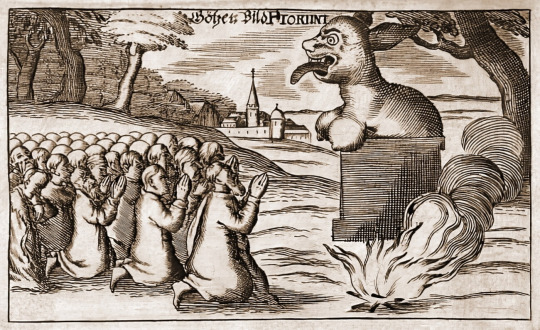
Worship of Perun among the Muscovites. Engraving from the book by G. A. Shleizing "Ancient and New Religion of the Muscovites", 1698
Later sources mention rituals in honor of Perun. For example, Novgorod fights were described, which were associated with the commemoration of Perun. There is also a mention of the rafting of Perun's idol down the river, similar to the description of the overthrow of his idol from the Tale of Bygone Years. Some researchers suggest that the chroniclers simply incorrectly conveyed the regular ritual. The motif of such funeral-conductions is rarely associated with thunder gods, it is more characteristic of the gods of the sun and fertility. This may mean that Perun had such functions as well.
Various assumptions about Perun's family ties, specific features of his veneration, sacrifices, temple construction, etc. should be treated with caution: they are based on controversial scientific data.
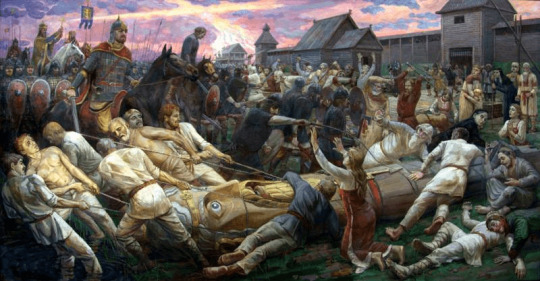
The overthrow of the idol of Perun in the painting "The Trampling of Old Russian Gods" by E. Shtyrov
But one can look at the peculiarities of popular veneration of the "formidable saint" Elijah the Prophet. His image began to converge with Perun even before the official baptism of Russia, as pagan and Christian legends converged (such a merger is more than characteristic of the pagan picture of the world). Most likely, this is what made Ilya one of the most revered saints in Rus'.
It was believed that the prophet rode across the sky on a golden or fiery chariot and struck devils and various creeps with lightning arrows. In some regions it was believed that Elijah should pray in a thunderstorm all the time, so that a demon would not enter a person, because then the prophet would strike him with lightning. Caution should be observed on Ilya's day at the end of the harvest (August 20): on this day it was forbidden to work in order not to anger the saint. In addition to striking devils and people with lightning, Ilya also sent down rain and drought. These legends about the saint probably go back to the image of Perun.
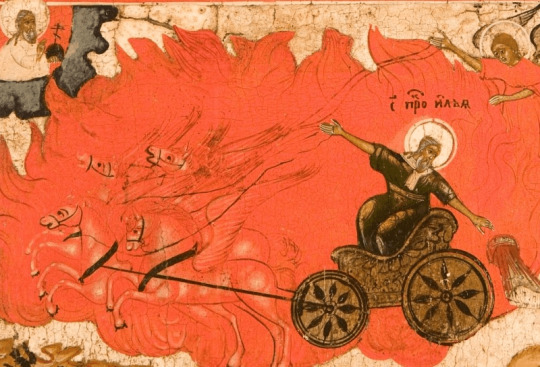
Elijah the Prophet on his chariot
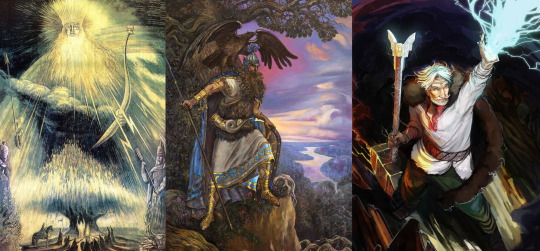
Various Peruns by lugvelesasrz, A. Klimenko, Mikado13
Mokosh-Makosh

Makosh by Viktor Korolkov
Mokosh is the only female goddess in Knyaz Vladimir's pantheon.
The romanticist researchers largely invented her cult from the folk veneration of St. Paraskeva Pyatnitsa, associated with weaving and needlework. From weaving made the transition to the threads of life, and Mokosh turned into the goddess of fate. The problem is that unlike Perun and the prophet Elijah, we do not know anything about Mokosh at all, except that she was a woman. For example, we have no data that she was depicted with a spinning wheel. So there is simply nothing to draw parallels between her and Paraskeva.
Sometimes the figure of Mokosha is brought closer to such a folklore character as Mother raw earth. This is a common image in bylinas and fairy tales, and we can conclude that in the Slavs' ideas the earth occupied a very important place. But it is hardly worth talking about the personification of the earth in the form of a goddess. Most likely, the earth as a living element was meant, which reminds ancient religious ideas, for example, the Chinese. However, it is possible to correlate Mokosh with Mother raw earth. This is much less of a stretch than many other theories about the Slavic gods.
Who else could be the only goddess included in the new unified pantheon? For example, the goddess of women, patroness of childbearing and women's crafts. Or the goddess of fertility, possibly acting as wife of Perun. Or maybe a warrior goddess like Ishtar, the embodiment of power and luck in battle. Such a woman could well be on the princely hill, where, judging by the "Tale" did not take the "cattle god" Volos, despite his great importance. Historical data in no way limit the flight of our imagination.

Mokosh by BirnaAlicja
Khors-Dazhbog
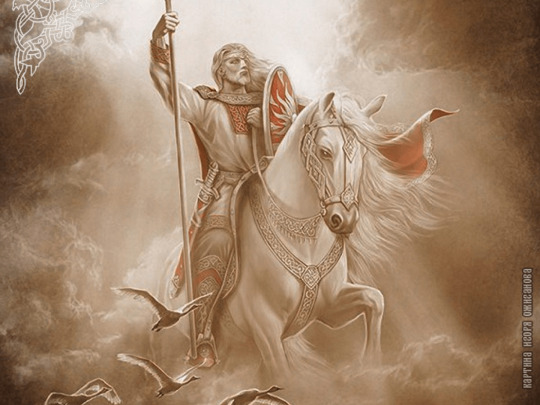
Khors by Igor Ozheganov
The further things are worse. Between the names of Khors and Dazhbog in the "Tale" there is no union, but between the other names there is. This may be a reproduced mistake of the scribe. Or it may be an indication that these are two names of the same god (Khors-Dazhbog). In other sources both gods appear separately, but are never mentioned together.
In the "Conversation of the three saints" there is such an answer to the question where lightning comes from: "There are two thunder angels: the Hellenic elder Perun and Khors the Jew - these are the two angels of lightning". What it means and why these national epithets - who can tell. Some researchers believe that this is an indication that the cult of Khors came to Russia from the Jewish Khazaria, but this is a controversial statement.

Khors by Andrey Shishkin
There are also questions with lightning. This is the only mention of Khors with its functions. But there is a popular theory about the etymological connection of Khors with the Iranian-language root "khur", "khvar", meaning "sun". Linguists dispute this point of view, but so far it remains dominant, and the idea of connection of Khors with lightning, which does not fit into this concept, is often rejected.
In the "Tale of Igor's Campaign" there is an ambiguous phrase: "in the night trotting wolf: from Kyiv to Tmutorokan kurs, to the great Hrsovi the way was broken". Interpreting "Hrsovi" as "Khorosovu", romantically inclined researchers conclude that the "Khors' way" and consisted in "trotting wolf". And so Khors was actually connected with wolves, werewolfism and acted as a dark god of wild beasts and witchcraft. But it should be remembered that the only direct indication of Khors' functions is connected with lightning, and in the "Tale" it is quite possible that he was not meant at all.
In short, the god Khors was, but what he was doing - we will never know.
And what about Dazhbog? Let's see what Wikipedia calls the most informative source about him - "Chronography" by the Byzantine John Malala. He wrote, however, about the Egyptians, and the name Dazhbog was used to translate the name of the sun god Helios mentioned there, which in turn symbolized Amon Ra. From this we can conclude with some tension that the translator associated Dazhbog with the sun god. Also the word "Dazhbog" is mentioned in Ukrainian songs, including as the one who ends winter and begins summer. This also confirms the solar version.
In "The Tale of Igor's Campaign" knyazs or all Rus' people are called "Dazhbog's grandsons". Although there are different opinions about what this means, perhaps it is about the fact that Dazhbog was perceived as the forefather, the god-grandfather of the nation or humans in general.
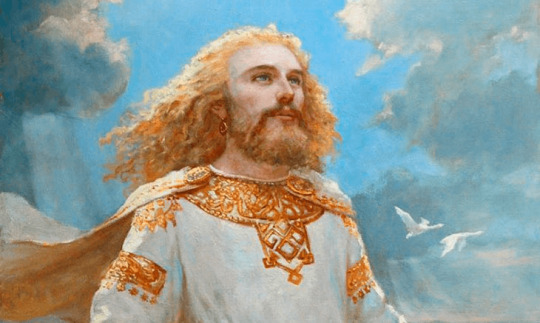
Dazhbog by Andrey Shishkin
Stribog
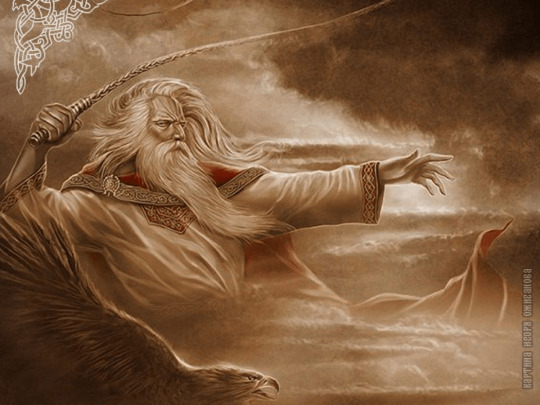
Stribog by Igor Ozheganov
Stribog is another character about whom we know nothing. Practically the only mention - in "The Tale of Igor's Campaign" it is said about the winds as "Stribog's grandsons", who direct arrows against Igor's army. On the basis of this not even a passage, but a sentence, theories were built that Stribog is the god of winds, as well as an evil god, an opponent of men, who was opposed to Dazhbog (mainly because both words are arranged in the same way).
From here went the identification of Stribog with St. Kasyan - a very curious character of folk Orthodoxy, evil, hostile, crooked (oblique) in one eye, guarding hell and sending winds and diseases. Kasyan deserves a separate story, but the grounds for his correlation with Stribog are very shaky.
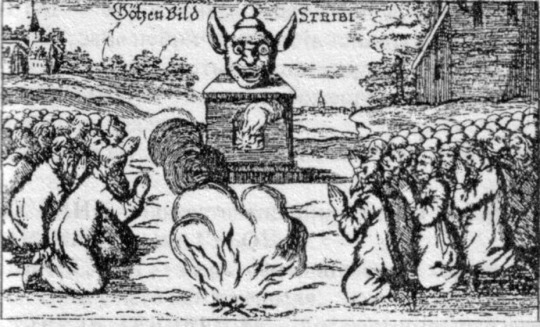
Worship of Stribog at the Muscovites. Engraving from the book by G. A. Shleizing "Ancient and New Religion of the Muscovites", 1698
Simargl

Semargl by V. Korolkov
And the most mysterious character of Vladimir's pantheon is Simargl. In the "Word of a certain Christ-lover and zealous for the right faith" there is a quote: "believe… in Sim and in Rjgl (Erjgl)". But in other manuscripts Simargl or Semargl is written in one word. Who this person or persons were, what they did, is unknown. At some point his name was correlated with the Iranian Simurg on the basis of the similarity of the words. Simurgh is a mythical king-bird whose image probably (probably!) derived from Senmurv, a half-bird half-dog. The odious researcher Rybakov suggested that it was the half-bird-half-dog that stood on the hill in Kyiv, that he was the messenger of the gods, and was also associated with fertility and much more. All this does not stand up to criticism from a scientific point of view.
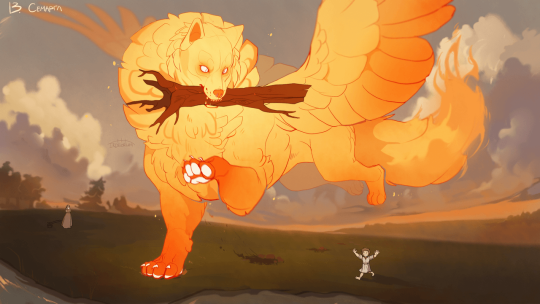
Simargl by Irdeorum-III
Who wasn't taken to the hill?
Volos / Veles
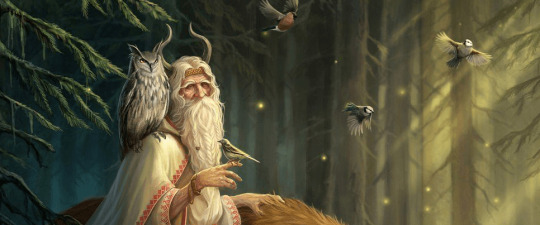
Veles by baklaher
Volos, judging by frequent references in sources, was a popular god of Ancient Rus. His name was sworn along with the name of Perun. He is often called the "cattle god", i.e. the patron of cattle, and therefore of wealth. That is, we even know what functions he had.
"The Tale of Bygone Years" does not mention Volos among the idols of Knyaz Vladimir's "pantheon". Much later "Kyiv Synopsis" mentions, but there and all the rest of the list differs, except for Perun. And in "The Life of Vladimir" it is said that the idol of Volos was thrown into the river, where in the "Tale" the idol of Perun was thrown. And here it is not clear: the idol of Volos was, but stood separately, as some researchers claim - for example, at the market? Or stood together with all, and Nestor did not mention it? Or some of the gods described by him is actually Volos?
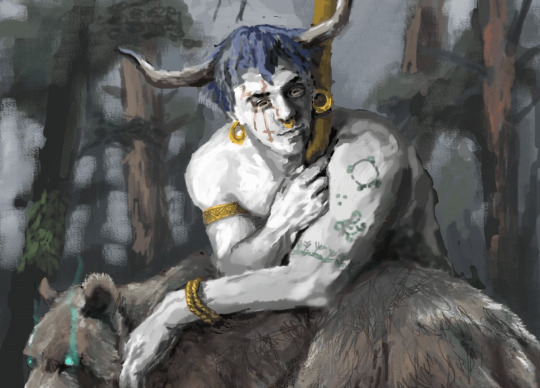
Veles by Milica Cvetic
All information about Volos besides the fact that it was an important god of cattle looks extremely shaky. There is a theory that he was an opponent of Perun. It is based on the correlation of Volos with the Baltic Vels and Velnyas, a spirit connected with the underworld and cattle, and the opponent of Perkunas the thunderer. However, it should be realized that the sources telling already about this character are rather late and of ambiguous authenticity.
When contrasting Volos and Perun, it is sometimes said that Volos was the earthly god of gold and the common people (apparently, farmers), and Perun was the heavenly god of war and the rulers' retinue. This idea is based largely on the text of the oath, which mentions both Perun and Volos, as well as gold and weapons: "let us be cursed by the God in whom we believe, Perun and Volos, the cattle god, let us be as yellow as gold, and let us be cut with our weapons".
But, first, there is no obvious distinction here. Secondly, gold is mentioned in the context of yellowing of the skin and speaks rather of disease. It would be more accurate to conclude that these were powerful gods ruling over life and death. Hair was indeed most likely associated with wealth, but expressed primarily in livestock . And the possession of wealth is not very peculiar to the "common people" who are usually poor.
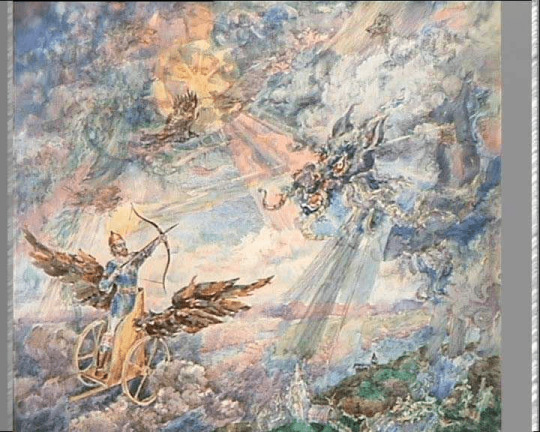
Perun fights with the serpent by A. Fantalov
The further development of the idea of the enmity between Perun and Volos turned him into a serpent, because the motif of the battle between the thunderer and the serpent is archetypal and is found in many peoples. The opposition of heavenly birds with earthly snakes, "creepers", in the culture of the Eastern Slavs occupies a very important place. But there is no reason to believe that it goes back to Volos.
"The Tale of Igor's Campaign" contains an indirect reference to Volos. Bayan, the legendary narrator, is called Veles' grandson. This can be understood as an epithet referring to his gift of words. And on this basis Veles is sometimes considered the god of poetry.

Veles by A. Klimenko
A more creative interpretation says that it refers to the gift of sorcery or volkhovanie. The idea of Veles as a god of wisdom, as well as many of his other attributes, entered popular culture from the "Book of Veles", a forgery from the 50s of the 20th century. For sure we can only say that there was such an important god Volos, and he had power over cattle, and thus welfare.

Veles by Andrey Shishkin
Svarog and Svarozhich
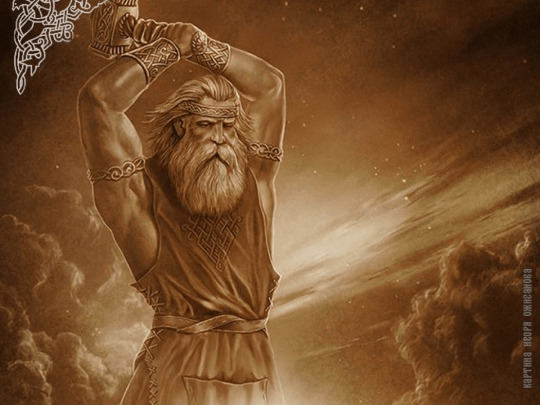
Svarog by Igor Ozheganov
Svarog is mentioned in the "Tale of Bygone Years", in the above described "Chronography" of John Malala. There, I remind, we are talking about the Egyptians, and the word "Svarog" is used to translate the name of Hephaestus (which is called, apparently, Khnum). Other sources mention Svarozhich, and it is probably the same character. Svarozhich was honored by the Western Slavs and was associated with fire. Whether he was honored in Ancient Rus is unknown.
Even if he was, a fire god is not always the same as a smith god, as Svarog is usually represented in popular culture. A fire god can be a god of hearth and sacrifice, a mediator between gods and humans, like the Indian Agni.
All others
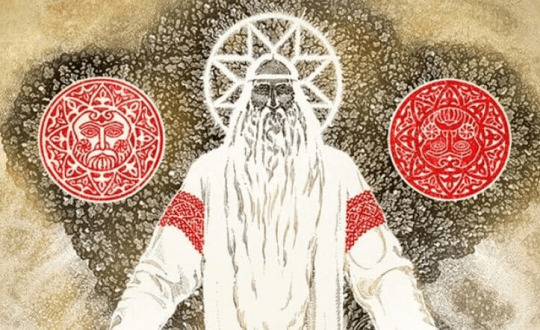
Rod by Maxim Kuleshov
For example, Trojan is the demonized emperor Trajan. His image is found in the folklore of the South Slavs, but it is more of a fairy-tale character. In "The Tale of Igor's Campaign" Trojan is also present, but there it is said about "time" or "trope" of Trojan, so it is not very clear whether it is about some ancient ruler-man, mythological character or deity, or whether there is some mistake of the copyist or translator.
It is also known as Dyj or Diy. Sometimes it is mentioned among the gods worshipped by pagans, but more often it is used to translate the name of Zeus in the retelling of ancient myths.
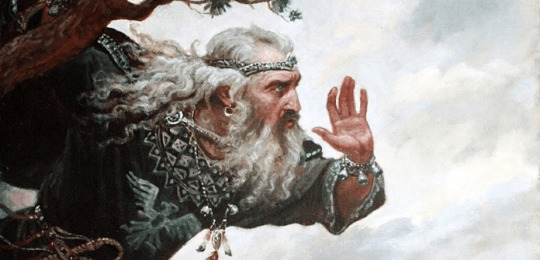
Pozvizd by Andrey Shishkin
Rod and the Rozhanitsy are not infrequently mentioned. But usually in the same lists, where in addition to gods it is said about the worship of vilas, ghouls, bereginas. Which, undoubtedly, were important characters in Slavic folklore, but they are rarely called gods, singling them out as a separate category (like nymphs, alves and other spirits). How far this is actually legitimate - the question is debatable, but this is the tradition. And it is quite possible that under Rod and Rozhanitsy meant the worship of ancestors and patron spirits.
The "Kyiv Synopsis", compiled very late, in the 17th century, gives an alternative list of idols erected by Vladimir. In addition to Perun, called the god of thunder and rain in human form, Volos, the god of cattle, as well as Pozvizd, Lado and Kupalo are mentioned.
All of them are associated with the book tradition: the authors of later sources, in imitation of the Greeks, invented gods themselves and then copied them from each other. Sometimes they relied on parallels with the same ancient mythology, sometimes - on grassroots folklore, folk rituals and festivals. And when odious researchers began to study such sources, Lado or Uslad, appearing in several later sources in the male gender, turned into the goddess Lada. That is, here we see layers and layers of fiction.
To such a mythology invented by scribes belong also Lel, Lelya and Polelya. The last three are chants like "la-la-la-la-la" deified in a desperate attempt to find some pagan gods.
Marena was hardly a goddess either, no matter how attractive her image in popular culture as a strong woman who commands winter and death. In fact, she is a ritual character, an effigy or tree burned when winter is spent, like Maslenitsa - or ritually mourned in later spring, like Kostroma. The latter connects it with the death-rebirth cycle: it is a metaphor for the sowing of seeds into the ground ("funeral") and their subsequent germination ("rebirth").
The second reason for the appearance of the image of the goddess of death is the similarity of the name Marena to the Latin root mor: "death", i.e. the fact that Christian authors and early researchers were engaged in folk etymology (this is when words are attributed a similar meaning because they sound similar, a headache for any linguist). But of course, the gothic ice maiden is beautiful.
Another popular image popularized by Gaiman's American Gods is Chernobog, the malevolent god of evil. The character is also very spectacular, moreover, most likely, really former god. It is described, however, in the Baltic Slavs, but in Russia and Ukraine there are toponyms referring to this name. We do not know much about him, except that because of the ominous name of Chernobog very much loved Christian authors, boldly writing him in the devils.
Often he is mentioned together with Belobog, his antagonist and embodiment of good. But in recent times, the opposition between Chernobog and Belobog has been attributed to the fantasy of authors impressed by Manichaeism (a dualistic religion that asserted that evil and good were equally powerful).
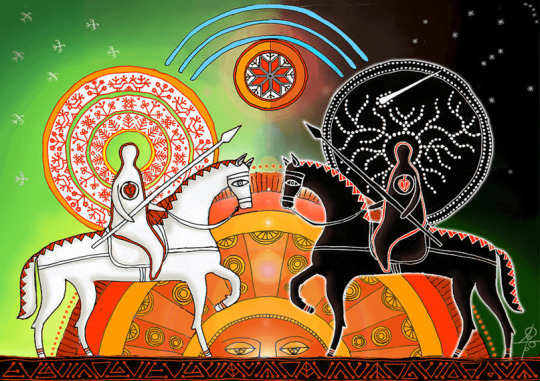
Chernobog and Belobog by Maxim Shukharev
As for Chernobog himself, if he was not invented by Christian authors, it is not a fact that he was such a villain. Black color does not always mean something bad, it can be associated, for example, with black soil - fertile land. It is not excluded that the black god could be called different characters depending on the area or specific idols made of black stone or wood.
Of course, it is a pity that we are not left with at least our own Edda to learn more about the gods worshipped by the Slavs in the territory of Ancient Rus. But this is not a unique situation - in many countries, ideas about the pagan past are also based on romantic speculations, controversial etymological constructions and Christian or Roman sources.
And if you want to learn more about mythological representations of Russians, Belarusians and Ukrainians - turn to the rich grassroots folklore, folk orthodoxy, fairy tales and songs. There you can find a lot of beautiful and interesting characters, images and themes that are undeservedly overlooked in attempts to find gods like those of the ancient Greeks.
Original by Maria Solntseva Translated by me :)
#slavic#slavic culture#slavic folklore#slavic folk#slavic mythology#folk#folklore#slavs#history#culture#history tag#mythology and folklore#mythology#slavic polytheism#slavic paganism#paganism#pagan#paganblr#diety work#ancient history#ancient rus#human history#polytheism#cultural history
37 notes
·
View notes
Text
Okay so a run down of my story and OCs ig:
- This sci-fi story takes place a couple centuries in the future. It’s got a sort of retro-futuristic cyberpunky feel to it.
- The story telling medium is partially prose and partially letters written to the reader by the protagonist of the story, Keiden (kEYE-den). Keiden abuses a system that is mostly used as a novelty in his time to send letters 500 years into the past to warn us of the future, and the story is how he gets fired from his job, wrapped up in a rebellion, and then the ensuing power struggle of setting up a new society post-revolution.
- In this future, humanity is interstellar, and intragalatic. Human corporations have colonized other planets and are draining them of their resources while exploiting human workers. If you’re familiar with the concept of company towns, colonization looks a lot like that.
- Keiden is ex-militia (ew), and now works as a sort of interstellar taxi driver for a company called Starchildren and Co. He gets involved in the revolution when he agrees to transport rebels to a raid, and the raid fails. Seeing as he’s got nothing left, he full on joins.
- Deals a lot with the horrors of colonization, the horrors of capitalism, and a lot of other things. Also how sometimes great revolutionaries don’t always make great officials, and how a well-meaning and just movement can get co-opted and corrupted.
- Keiden is trans btw. Yes he picked that name himself. Yes it sucks. Also almost everyone in the story is either trans or a POC or most often, both.
- YES KEIDEN IS MEANT TO NOT BE THE GREATEST GUY. HE IS NOT REALLY SOMEONE TO LOOK UP TO. He does a lot of good things for self-motivated reasons, and doesn’t do a lot of things he Should do because he doesn’t give a fuck. He’s extremely morally questionable.
- Other characters include Axiom (trans woman, rebel leader, has an awesome lesbian partner, threatens to shoot Keiden when he hits on her) and Gram (robot bartender of the rebel’s hangout spot. Very outdated model. Fearful bc any day it could be picked up and thrown in the scrap heap. Uses it/its pronouns EXCLUSIVELY). Also the unnamed #theyboss of Starchildren and Co that gets assassinated (spoilers sorry)
#letters from the 25th century#<- the name of the short stories i was writing#and ig my tag about my OCs now
6 notes
·
View notes